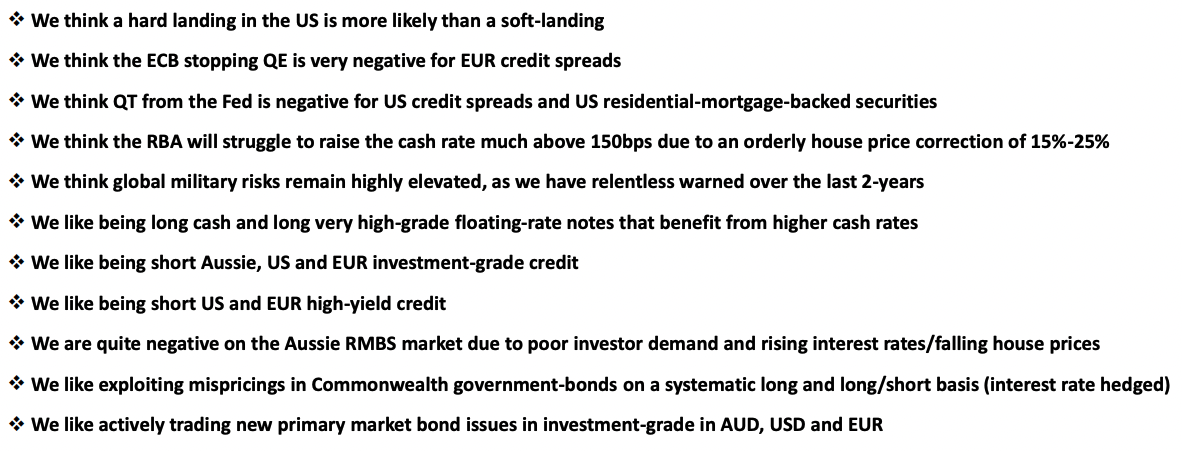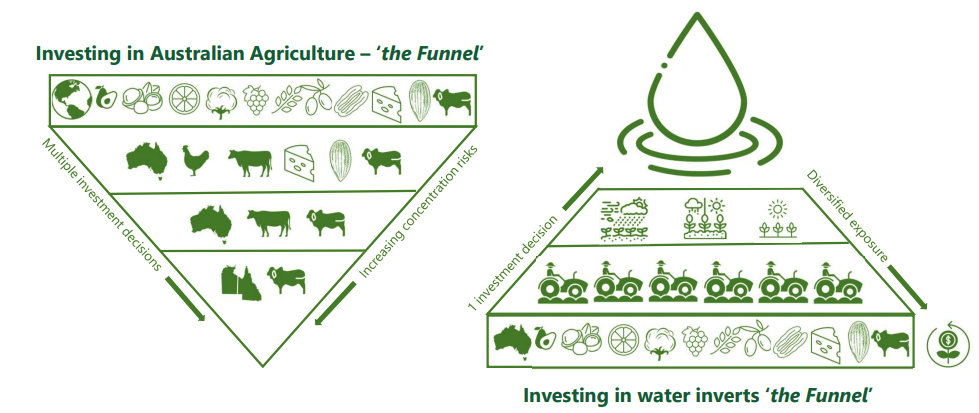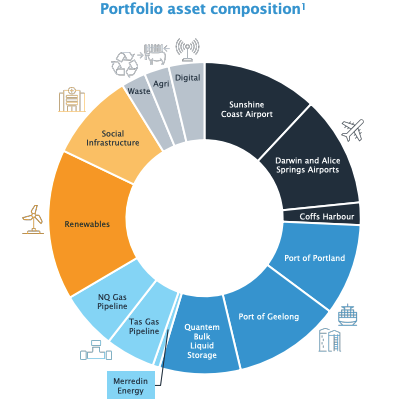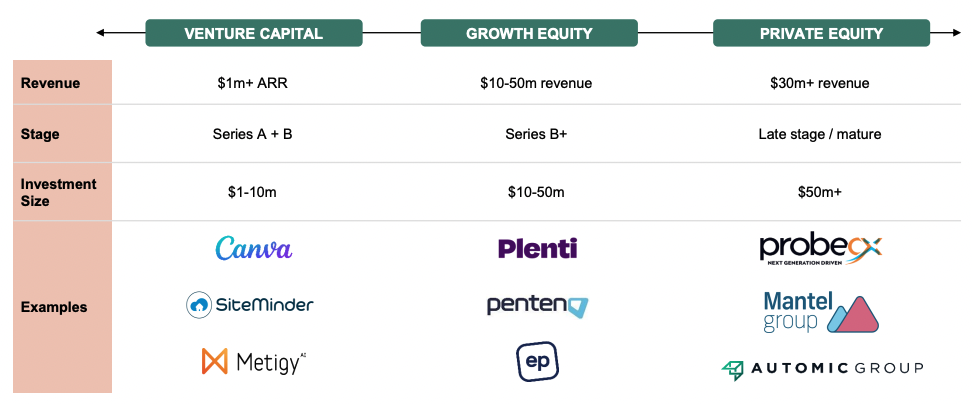Why now is the time to add alternatives to your portfolio
There are more than 2,000 companies listed on the ASX, and unless your dominant trade has been in the commodities space, chances are it's been a rough 2022 so far. Enter in the tried, true and different option - alternative assets.
From infrastructure to water allocations, private debt to unique tools that you can use to short the housing bubble, there is an even bigger universe of options that could be winners in your portfolio. The only problem is that often, these assets are also complex and, in some cases, difficult to access at the best of times.
But things are changing.
In this wire, we'll examine some of those options (as covered during Pinnacle Investment Management’s recent Summit Series event dedicated to Alternatives) and discuss why now is the perfect time even for retail investors to consider unlisted or out-of-the-box strategies.
The (two) big shorts
Ask a finance observer what their favourite movie is and somewhere down the line you will probably get The Big Short as a response. The Steve Carell and Christian Bale biopic of Michael Burry has become an instantly recognisable story. Yet, the act of shorting often gets a bad wrap from the investment community given they could be considered villainous for a company's share price trajectory.
But Patrick Hodgens of Firetrail Investments argues that shorting, in the right hands and circumstances, can make you a lot of money. The secret, in Patrick's mind, is to choose an investment without the risk of falling alongside other listed assets.
"Choose a fund that has low or no correlation to those traditional asset classes. Choose a fund that can provide downside protection through major market dislocations," Patrick says.
In addition, you should follow some key rules about what to short and more importantly, when.
"Shorting, in my view, is the best tool a fund manager can use to manage risk," Patrick says before adding that his preferred technique is to look for companies that are at risk of an earnings downgrade.
Last year, there were 170 opportunities in that sphere alone. Patrick and his team went on to short 25 of these names.
Someone else who has well mastered the art of shorting in practice is Christopher Joye and Dr Stephen Parker of Coolabah Capital. In his presentation at the event, he revealed that the company has two billion dollars in shorts outstanding right now. His reasoning is simple.
"The market's not prepared for a restricted cash rate above 3%," Chris argues. "If that happens, it will be cataclysmic for everything."

"We're shorting US, European, and Australian investment-grade credit as well as US and European high yield," Chris says. Indeed, it's those shorts that have delivered for Chris even after a quarter where fixed income returns were decimated globally.
Investing in the ultimate universal need: water
From shorting, we move to investment opportunities in a commodity described as the most efficient way to invest in Australian agriculture, and the ultimate diversifier – water.
For Nick Waters at Riparian Capital Partners, investing in water comes through allocations and entitlements, with Australia home to one of the most advanced an efficient water markets globally.
"The drivers that underpin the water market's value are completely unrelated to other asset markets," Nick says. "That provides investors with a genuine source of alternative beta."

Nick also notes that water infrastructure is also supported by ongoing demand given it's the farmers who are both demanding and paying for the resource.
Nick's fund is nothing short of ambitious though. It targets returns of 10-12% per year but he says those returns come because the assets are high quality and, in the case of Riparian, spread across different farms and across four states.
"By making one decision, you can gain a diversified exposure to all of the commodities being grown in the various water markets across Australia," Nick says.
Come fly with me
Speaking of infrastructure that is always in demand, have you ever thought of owning your own airport? Maybe your own shipping port? What about wind or solar farms? Palisade Investment Partners MD Vicki Rigg admits that mid-tier infrastructure assets can be hard to access if you're on your own.
But it's not impossible - and scale is making all the difference.

With an asset count of 26, Vicki's fund is (apparently) one of the most diverse on the market. Airports make up 25% of the portfolio with most of that in regional places. The fund also has investments in renewable energy farms, hospitals, and even the Gold Coast's light rail project.
"We very much focus on providing long-term, stable returns to our investors with a focus on cash yields," Vicki says. "We have a view that being in an unlisted asset class, one of the best ways to know you're receiving value is to see cash come back into your pocket."
But the big question is - can those returns continue?
"We see continued, significant appetite in this sector," Vicki notes. While not every sector will be firing all the time, she says there is a range of tailwinds coming for the airports and social infrastructure markets in particular.
Indebted
With large assets comes large amounts of debt - and, according to Andrew Lockhart of Metrics Credit Partners, the potential to make some serious income.
"One of the things that strikes me in the current environment is the nervousness of investors," Andrew notes. "No asset prices have been spared."
Andrew says Australian private debt provides the contrast - an attractive and stable source of income. "Not only have we delivered stability of capital, we've delivered an attractive income."
Private debt, he hastens to add, is nothing like corporate bonds because they can stand on their own two feet while providing a quality, diversified income.
"Every transaction involves us understanding what's driving the cash flow and not just the funding," Andrew says.
Spotting the diamond in the rough
So far, we've talked about uncorrelated alternative assets that are mostly stable and provide steady returns even in the most down of cycles. But what if you want something a little more exciting - and most importantly, could make you an outsized return?
Let us introduce you to Adrian McKenzie and Five V Capital - a private capital fund that has grown at least 12% a year since 2010 and has names such as Canva, SiteMinder, and ASX-listed Universal Store to its credit. Last year alone, the value of Australia's startup industry increased by $10 billion last year alone.
"In Australia, we're relatively underpenetrated when it comes to private equity and venture capital," Adrian says.

However, investing in growth is not that simple - or for that matter, every place. Adrian's fund takes pride in investing across a business' life cycle. From the moment a company makes its first million to either an eventual sale or even bigger things, the key is to look out for the right talent for the right project.
"When we sit across the table from founders and we tell them we are investing our personal capital into their business, it's amazing how it cements the connection," Adrian says. "We're very pragmatic sellers."
Conclusion
Most things, at one time or another, start off as an alternative investment. In a world where equity valuations are correcting, fixed-income yields remain relatively low by historic terms, and the commodities trade bolted a long time ago, the obvious choices have been long out of the picture.
However, when it's handled the right way and by expert managers, alternative assets can provide sustainable returns - even ahead of the market at a time when publicly listed asset valuations are in a major correction period like the one investors are witnessing right now.
Thinking of adding alternatives to your portfolio?
Head to the Pinnacle Investment Management website for more information on the above managers.
3 topics
5 contributors mentioned

